The two curators were really surprised but I had never heard of Charles Camoin before seeing the new show “Un fauve en liberté” (The Free Fauve) at Musée de Montmartre whose garden is waking up to spring on top of the Butte. His long career (1879-1965) started in Gustave Moreau’s atelier where his mother, a talented artist herself, had brought him in 1898. His father was a decorator and paint merchant in Marseille. Camoin often returned to Provence while working in Paris. He lived at some point at 12 rue Cortot where the exhibition is taking place. The latest show of his works was in 2016, at Musée Granet in Aix en Provence which focused on his Mediterranean origins. He is known for having brought to Paris the southern light, the harmony of color, a lyrical realism which is associated to fauvism. Although very young when he arrived, he was immediately adopted by his life long friends Matisse and Marquet and by the circle of Montmartre impressionists.
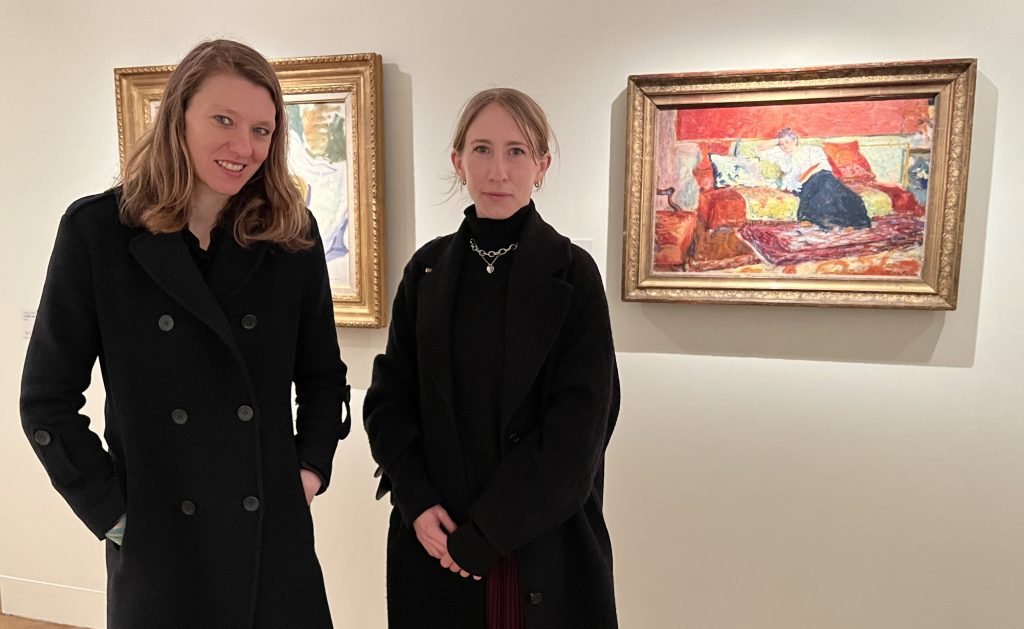
Saskia Ooms and Assia Quenel, the two curators in front of “The artist’s mother reading on the sofa, 1897, Musée d’Art Moderne de Paris
Camoin was always attracted to colorists like the portrait of his mother lying on a sofa with her palette in hand testifies. He met Cézanne in 1901 near Arles while doing his military service and he kept him as a spiritual father. The portrait he makes of Albert Marquet reminded me irresistibly of Cézanne’s seated man. Apparently often travelled with Marquet and they both painted the same motifs like Notre Dame or houses in Montmartre lent by Galerie de La Présidence.
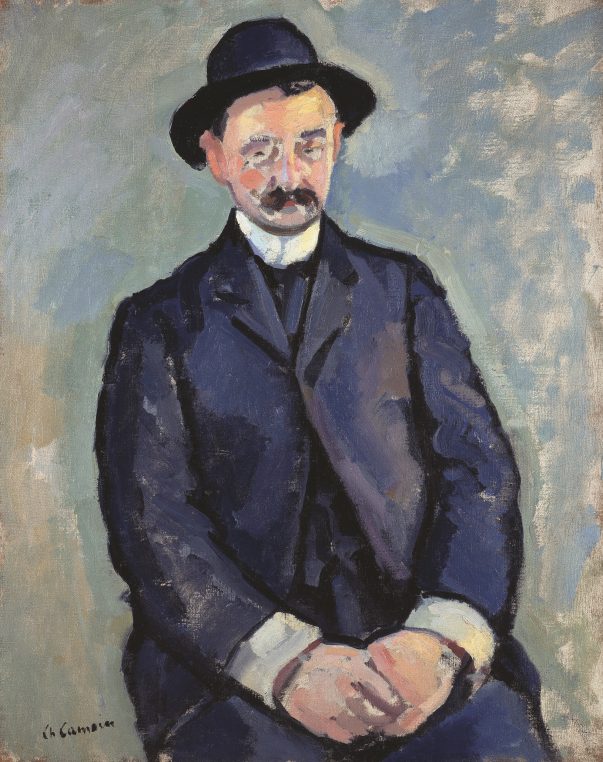
Portrait of Albert Marquet ca 1904-1905, Musée national d’art moderne/Centre de création industrielle, Centre Pompidou, deposited at musée Fabre, Montpellier. ADAGP, Paris 2022
I particularly like the two very elegant portraits of his wife Lola in Saint Tropez and on a balcony in the South of France. And the rue Bouterie in Marseille where all the whores (his friends) are waiting gon the sidewalk. He paints the scene as if it were a feast! Some of his drawings are quite erotic asa result of his visits to the Bar des Roses in Saint Tropez. There he met a prostitute in 1905, whom he painted naked as “la Saltimbanque”, the gipsy, the same way Courbet painted “The origin of the world”. Very soon he was exhibited by Kahnweiler and then in Frankfurt by Ludwig Shames. This will lead to him being noticed by expressionist painters such as August Macke. Moscow, Prag, Brussels more shows follow. In 1913, he is invited at the Armory Show in New York.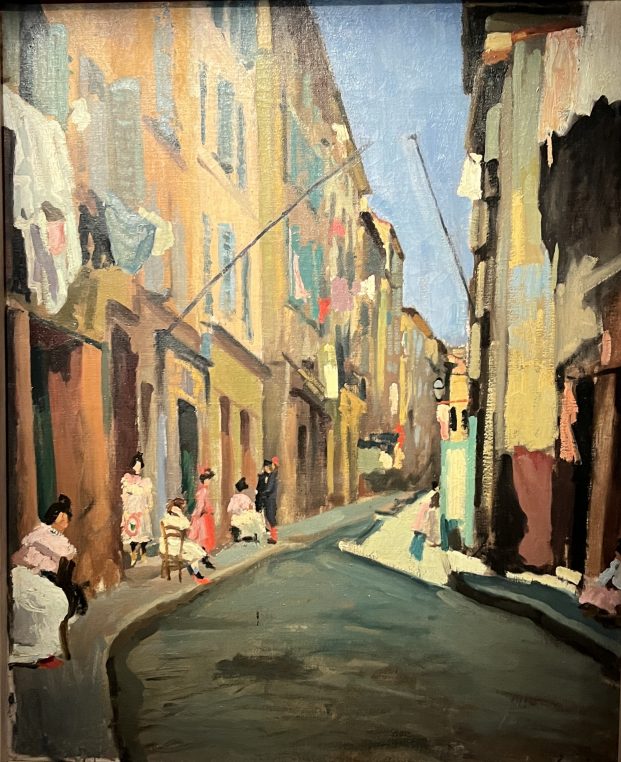
He served during WWI as a camouflage artist in Amiens and Noyon. But just before the conflict, after a bout of depression and just after returning form Tangiers, he slashed eighty of his own paintings in an act of rage. A neighbor found the canvases in the bin and sold them at the flea market. They were later collected and restored and Camoin was able to retrieve them in 1931 after a six year long trial, against Francis Carco who had tried to sell them at Drouot. This law suit established “Le droit de suite” which enables all artists in France to receive a percentage on sales of their works.
After the war, while most artists settled in Montparnasse, Camoin remained in Montmartre on rue Lepic and also works in Saint Tropez which was an unknown village at the time. one of my favorite painting is the harbor of Marseille as seen trough the masts of a few sailboats. They form a very modern series of squares.

Marseille harbor, Notre Dame de la Garde seen through the masts, Musée d’Art moderne André Malraux, Le Havre
A portrait of Camoin painting by Marquet, Madame Matisse in a kimono, and a few sunny sea views complete this excellent group of works. I really enjoyed this show in the very pretty museum of Montmartre. There is a cafeteria in the garden and a catalog for 25€. The museum has just launched a new campaign to restore the Cabaret of the Chat Noir, an avant garde literary, musical and artistic cabaret. A shadow theatre will be recreated in the museum.
You can join the American friends of Musée de Montmartre (starting at 200$). This association is presided by Jacqui Michel and will develop special projects between art lovers in the US and in France.
Charles Camoin, Un fauve en liberté, until September 11 at Musée de Montmartre, 12 rue Cortot.
Share this Post
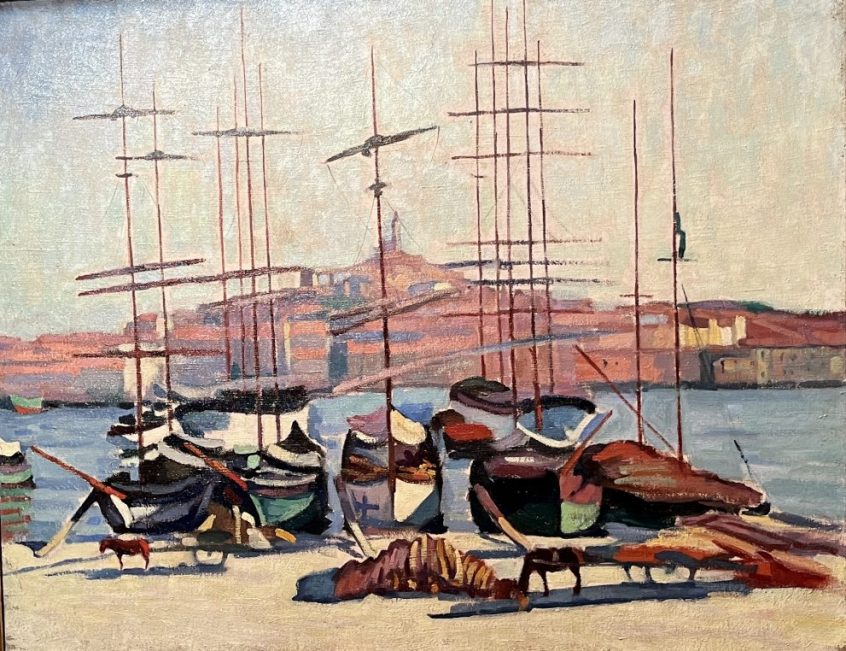
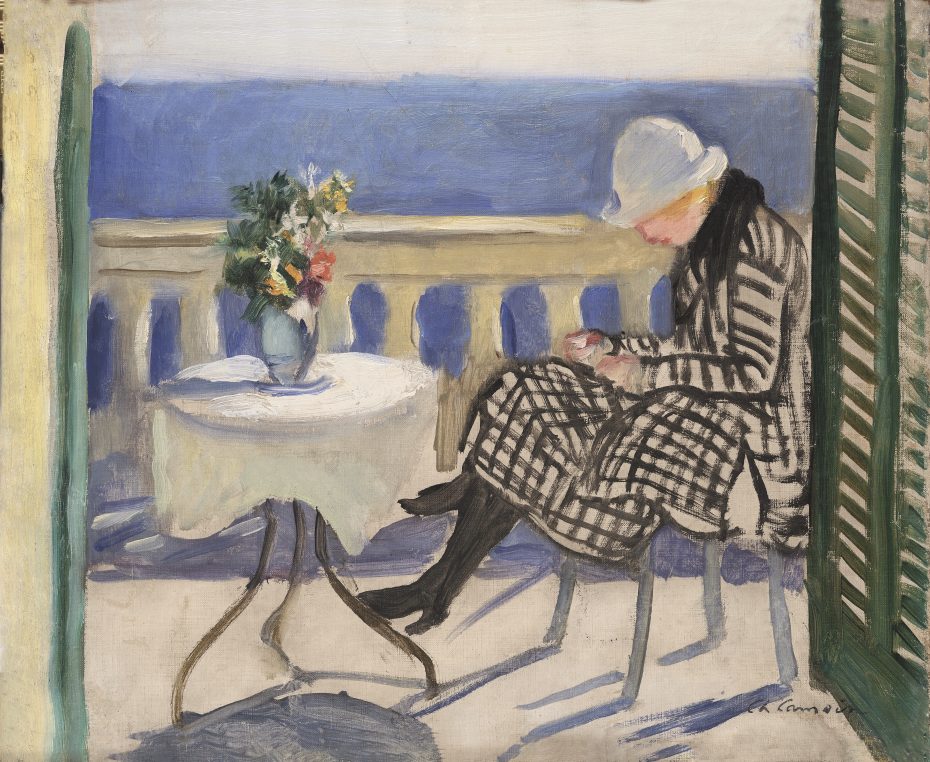
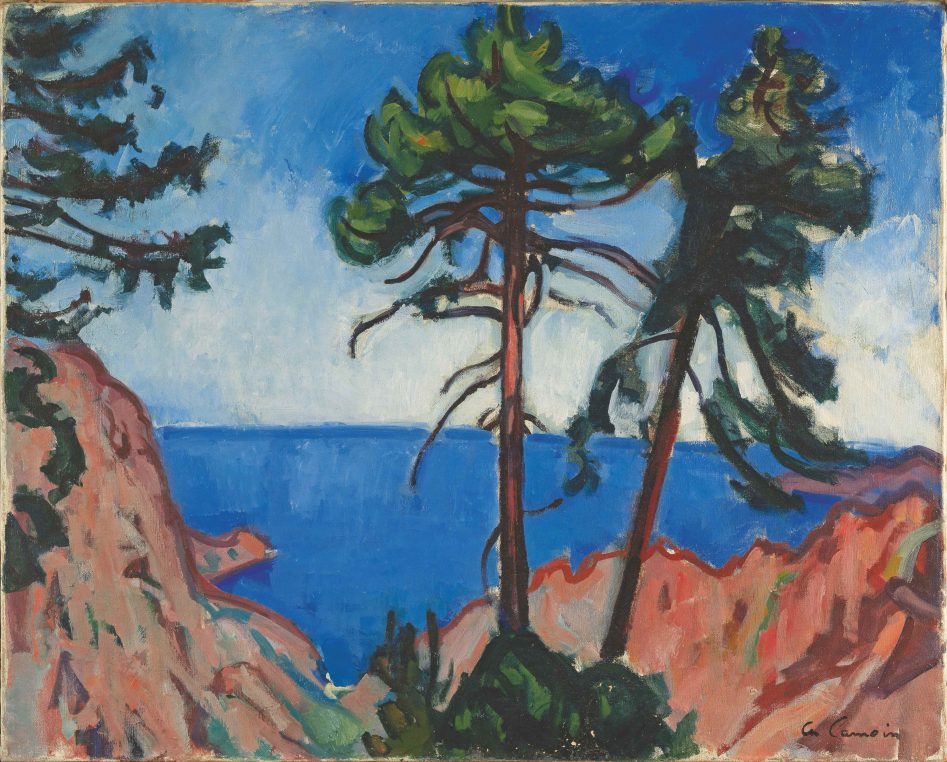
5 Comments on “Charles Camoin at Musée de Montmartre, a discovery”
My immediate impression of the first painting of the woman in the window, was a happy marriage of Bonnard and Marquet. I too never heard of Charles Camoin before but I will definitely go see this wonderful exhibition. Merci Laure encore!
je connaissais Camoin; bon artiste; merci
Rv
What a wonderful artist. He reminds me of the Scottish colourists. A must see when we are next in Paris!
xx
Merci Laure. I join the list of people who had not heard of M Camoin but I too will try to visit this exchition.
Paula xx
And I never knew this little gem of a museum was artist Suzanne Valadon’s home!